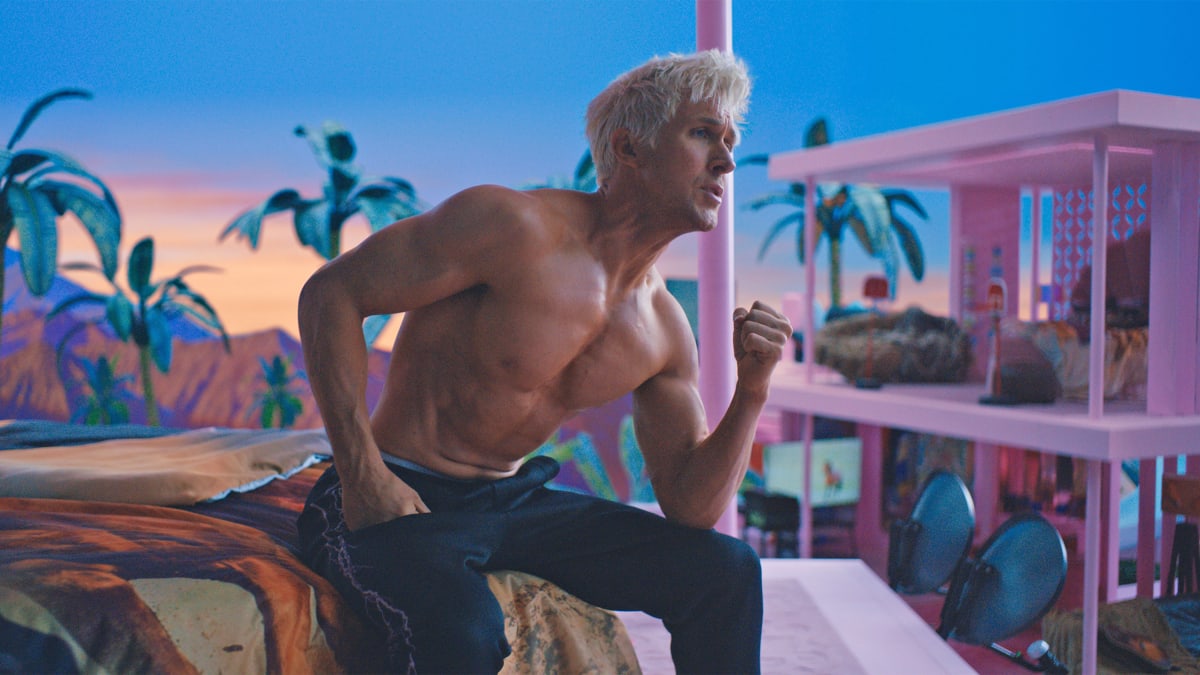When Sarah Greenwood, the production designer, and Katie Spencer, the set decorator, embarked on the creation of the Malibu mansion for Barbie, they were novices in the world of the iconic doll. Unfamiliar with owning Barbie dolls or her Dream House, their creative journey began with the director’s script. Their vision was further shaped by a mutual admiration for vintage Americana, embracing its simplicity and exuberance, which they translated into a pink, toy-like paradise. Drawing inspiration from architectural marvels like the renowned Kaufmann House in Palm Springs, they nestled this idyllic haven within the heart of Barbie’s universe.
A standout achievement of the Barbie movie lies in the immersive universe crafted by its production team. From the evocative retro costumes to the vibrant, candy-colored landscapes that Barbie and her companions inhabit, the film is a visual delight. Every element in Barbie Land was meticulously designed to exude a toy-like quality. Greenwood and Spencer ingeniously downsized everything by 23 percent to create a whimsical effect, making the human actors appear slightly larger than life. The absence of walls in Barbie Land’s residences allowed seamless transitions from one space to another, mirroring the carefree essence of Barbie herself.
The tranquility of Barbie’s paradise was disrupted when the Kens, led by a flamboyant figure in a mink coat, decided to make their grand entrance. Frustrated by playing second fiddle to the women in their lives, the Kens transformed Barbie Land with their garish embellishments. Oversized gadgets, gym paraphernalia, and somber hues invaded the once-vibrant landscape, altering its vibe entirely.
In a candid conversation with The Daily Beast’s Obsessed, Spencer reminisced about the pivotal moment when she and Greenwood contemplated the drastic transformation looming over their meticulously crafted world. Despite their incredulity at the impending ugliness, Gerwig’s resolute affirmation paved the way for the male-dominated eyesore that manifested on screen.
Ken’s Mojo Dojo Casa House epitomizes a jarring fusion of dark woods, equestrian motifs, and leather accents. From a saloon-style entrance to an ostentatious ergonomic gaming chair and an abundance of cowboy hats adorning the walls, the decor exudes a discordant charm. Drawing inspiration from the pop artist Richard Hamilton’s 1956 collage, the design team embraced a chaotic aesthetic where disparate elements coalesced around a provocative central figure—a nude muscle man wielding an oversized orange lollipop.
Greenwood elucidated that the essence of Ken’s aesthetic lay in the haphazard assembly of elements, akin to Hamilton’s collage technique. Rather than dismantling Barbie’s world, Ken superimposed his possessions, overshadowing her identity with his assertive presence. The proliferation of televisions, a staggering 21 in total, symbolized Ken’s dominance, scattered across unconventional surfaces like chimneys and trees, all displaying the same serene yet melancholic imagery of galloping horses.
Despite the initial revulsion evoked by Ken’s intrusive decor, Greenwood acknowledged a newfound appreciation for its unconventional charm. Surprisingly, Spencer disclosed that 50 percent of the crew expressed a desire to inhabit the Mojo Dojo Casa House, hinting at a shared affinity for its eccentric allure. The bizarre beauty in ugliness resonated with many, evoking a sense of melancholy intertwined with unexpected allure, drawing inspiration from the unlikeliest sources.
While the garish aesthetics of Ken’s domain may not appeal to everyone, Greenwood and Spencer discovered a peculiar allure in its unconventional design. The Mojo Dojo Casa House, with its mishmash of elements, encapsulates a unique charm that, despite its discordance, captivates with a melancholic beauty that defies conventional norms.
